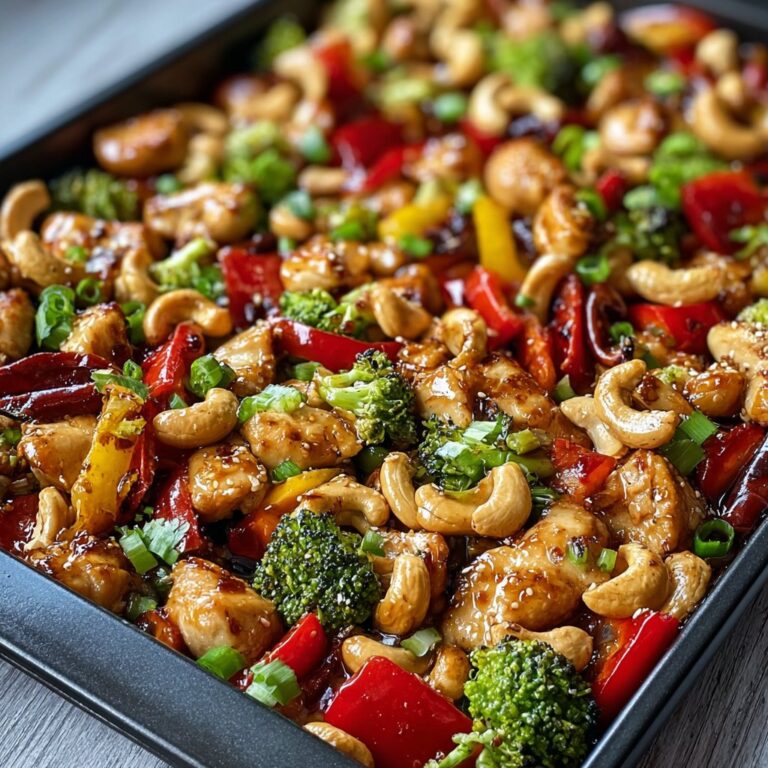Butternut Squash Ravioli: My Cozy Homemade Pasta Guide
Wait, Have You Tried Making Butternut Squash Ravioli Yet?
I still remember the first time I decided to take a swing at butternut squash ravioli. I’d just come home from the farmers market (back when I still thought wandering those aisles made up for not running that day). There was this happy little squash just sort of grinning at me from the counter, like, do something amazing with me! And honestly, I almost just roasted it again like usual, but then I thought—no, let’s try stuffing it into pasta and pretending I’m fancier than I am. And hey, it turned out way easier than the word “ravioli” makes it sound. Plus, making homemade pasta is messy and fun and, let’s be real, a bit of a workout. Who needs Pilates?
Why I Keep Coming Back To This
I make this when I want to impress someone (or just myself on a random Tuesday). My family goes off their rockers for it especially since it’s sweet and savory all at once—my cousin calls it “autumn disguised as dinner.” Sometimes, though, getting the ravioli to actually stay sealed is as if I’m entering a dumpling battle with myself (seriously, if you have tips, send help). But—and here’s the secret part—I think I love the leftovers even more, if there are any. Maybe because the flavors deepen overnight. Or maybe it’s just because pasta is always better when someone else did all the hard work yesterday.
Gather These Ingredients (But Relax, It’s Flexible)
- 1 smallish butternut squash (about 1 1/2 pounds) – once or twice, I’ve swapped this for acorn squash; works fine but it’s a touch less sweet
- 1 1/2 cups ricotta (sometimes I use goat cheese for a little tang if I want to raise a few eyebrows)
- 1/2 cup grated Parmesan – my gran swore by Parmigiano-Reggiano, but honestly, just use what you’ve got
- Pasta dough for ravioli (honestly, store-bought sheets if you’re feeling sensible, but I’ve included a basic recipe below just in case you’re feeling chef-y)
- 1 egg yolk (plus 1 more for sealing, if you’re old school about it)
- Salt and black pepper
- Optional: A pinch of nutmeg, a dash of fresh sage
- For the sauce: A good knob of butter (like 2 tablespoons), fresh sage leaves, and a handful of chopped walnuts (but sometimes I just drizzle some browned butter with dried herbs if I’m out of fancy stuff)
Let’s Get Down to Business: Directions
- First, roast your squash. Cut it in half down the middle. (Watch your fingers! I had a close call once.) Scoop out the seeds and slap it on a lined baking tray, cut side down. Roast at 400°F (about 200°C) until a fork slides in with zero resistance—typically 40 minutes, give or take. I always let mine cool for a bit because burning your fingers scraping out squash is an oddly specific pain.
- Make the filling. Scrape out the cooled flesh into a bowl. Mash it with a fork or, if you’re feeling posh, use a food processor. Stir in the ricotta, Parmesan, egg yolk, some salt and pepper, and that nutmeg if you remembered it. This is where I sneak a taste—and sometimes add more cheese.
- Pasta time (brace yourself). If you made your own dough: Roll it out on a floured surface till it’s… well, thinner than you think. About the thickness of a dime. If using store-bought, ignore the guilt, it’s still delicious. Lay out sheets, dollop teaspoonfuls of filling a couple of inches apart. Brush around the mounds with that extra yolk (or just water, works too) and top with another sheet. Press around the filling to seal, cut into ravioli. Don’t panic if a few look wonky—they all turn out lovable.
- Cooking time. Bring a big pot of salted water to a not-too-violent boil. Drop in the ravioli and give a quick, gentle swirl so they don’t stick (I use a big wooden spoon for this – it’s like herding cats). Boil for 3-4 minutes tops (they’ll float when they’re ready).
- Sauce time. Melt butter in a pan over medium heat, toss in sage leaves until the whole thing smells amazing. (Honestly, if you stop here and just eat bread dipped in that, no judgment.) Add the walnuts last so they just toast a bit.
- Drain the ravioli carefully, tumble into the buttery sage stuff, and swirl. And—go on—grate more Parmesan on top.
If I’ve Learned Anything (Notes!)
- Actually, I find it works better if you let the filling cool a little before stuffing; less runny = less messy ravioli patching.
- Don’t sweat it if your dough looks like a map of Italy after you roll it out—imperfect shapes feel rustic, right?
- The first time I tried to make giant ravioli, I overfilled them and basically invented butternut squash soup. Maybe keep them on the smaller side.
- Sneaky tip: If your kitchen’s too warm, let the assembled ravioli rest in the fridge for a bit before cooking.
Experiments (Some Worked, Some… Did Not)
- I tried adding caramelized onions to the filling once and, actually, that was an A+ move.
- My attempt at gluten-free dough was a bit sad. Maybe you’ll have better luck, but mine kept falling apart (or maybe I just need more practice).
- Using roasted sweet potato instead of squash is legit if you’re out of squash—it’s a fun twist.
- For a vegan version, I swapped in firm tofu and nutritional yeast; didn’t fool my cheese-loving family but still good.
What Kitchen Gadgets (Or Not) Do You Need?
- Pasta roller is helpful (and satisfying!)—but if you don’t have one, grab your rolling pin and embrace the workout. Or, honestly, wine bottle in a pinch, just clean it first.
- Sharp knife or pastry cutter for shaping.
- Baking sheet/tray
- Big pot for boiling (if you don’t own a stock pot, two medium ones work, sort of)
- Basic mixing bowl and a fork

Stashing Leftovers: But Does Anyone Have Leftovers?
Okay, so technically you can store cooked ravioli in an airtight container in the fridge for a day or two. Just reheat them gently in a pan with a splash of water or butter; microwaving makes them rubbery, trust me. I’ve heard they freeze well before boiling (put them on a tray, freeze, then bag them), but—confession—in my house, they don’t really last much past dinner. The smell alone brings everyone running.
How I Love to Serve This (And, What My Family Demands)
A big tangle of these ravioli under a mess of browned sage butter, a scattering of walnuts, and extra cheese, naturally, is my go-to. But sometimes I set out some garlicky roasted broccoli or a leafy salad for color. My brother insists they’ll only ever be perfect with a big glass of white wine. And if it’s Sunday, maybe some crusty bread so you can mop up any leftover sauce (that’s the real treasure anyway).
One or Two Things I Wish I’d Known Sooner (Pro Tips)
- I once rushed the dough-rolling step and ended up with ravioli that were a bit… toothy. Take the time to roll thin, or you’ll basically be eating dumpling sandwiches.
- Seal the ravioli really well or they’ll open in the pot and make a squishy mess. Press around the edges—don’t be shy.
- Give your sauce pan a minute to get the butter properly browned. I get impatient but, boy, it’s worth it.
Chatty FAQ (Real Questions, Real Answers)
- Can I use store-bought pasta sheets?
100 percent yes. Sometimes I use any fresh lasagna sheets I find—just cut them down. Honestly, saves so much fuss. - What if I don’t have sage?
Try thyme, or even rosemary, but go light or it’ll wrestle with the squash flavor. Or, skip it and just use plain browned butter. Still delish. - Can I prep this ahead?
Sure, you can make the filling and keep in the fridge for like, a day. Assemble the ravioli a few hours ahead if you want; just cover them so they don’t dry out. - My filling is runny. What do I do?
Add more cheese or a spoonful of breadcrumbs. Or just let it sit in the fridge awhile. (Sometimes, I just say, “eh,” and deal with a messier finished product.) - Any good resources for learning pasta from scratch?
So glad you asked! This Serious Eats pasta guide was my first real epiphany, and The Kitchn’s ravioli photo walk-through helped when my third batch looked more like tiny pillows than pasta. - How do I stop the ravioli sticking together?
A little dusting of semolina flour works wonders. And don’t pile them up before cooking; promise, I’ve been there, and it’s not pretty.
So that’s my not-so-secret guide to butternut squash ravioli. Give it a go. Make a mess. Eat something gorgeous. And if you invent a new twist, I want to hear about it! (Or, at least, swap squidgy dough stories.)
Ingredients
- 1 medium butternut squash (about 2 pounds), peeled and cubed
- 1 tablespoon olive oil
- 1/2 cup ricotta cheese
- 1/4 cup grated Parmesan cheese
- 1/2 teaspoon salt
- 1/4 teaspoon ground black pepper
- 1 package fresh pasta sheets (about 9 ounces) or homemade pasta dough
- 4 tablespoons unsalted butter
- 6 fresh sage leaves, chopped
- 1 egg, beaten (for sealing the ravioli)
Instructions
-
1Preheat oven to 400°F (200°C). Toss butternut squash cubes with olive oil, salt, and pepper. Spread on a baking sheet and roast for 25 minutes until tender.
-
2Allow roasted squash to cool slightly, then combine in a bowl with ricotta and Parmesan cheese. Mash until smooth and well combined.
-
3Lay pasta sheets on a floured surface. Place teaspoons of the filling about 2 inches apart on one sheet. Brush edges with beaten egg, cover with another sheet, and press to seal. Cut into individual ravioli.
-
4Bring a large pot of salted water to a boil. Cook ravioli in batches for 3-4 minutes, or until they float. Remove with a slotted spoon.
-
5While ravioli cooks, melt butter in a skillet over medium heat. Add chopped sage and cook until fragrant, 1-2 minutes. Drizzle sage butter over ravioli and serve immediately.
Approximate Information for One Serving
Nutrition Disclaimers
Number of total servings shown is approximate. Actual number of servings will depend on your preferred portion sizes.
Nutritional values shown are general guidelines and reflect information for 1 serving using the ingredients listed, not including any optional ingredients. Actual macros may vary slightly depending on specific brands and types of ingredients used.
To determine the weight of one serving, prepare the recipe as instructed. Weigh the finished recipe, then divide the weight of the finished recipe (not including the weight of the container the food is in) by the desired number of servings. Result will be the weight of one serving.
Did you make this recipe?
Please consider Pinning it!!






